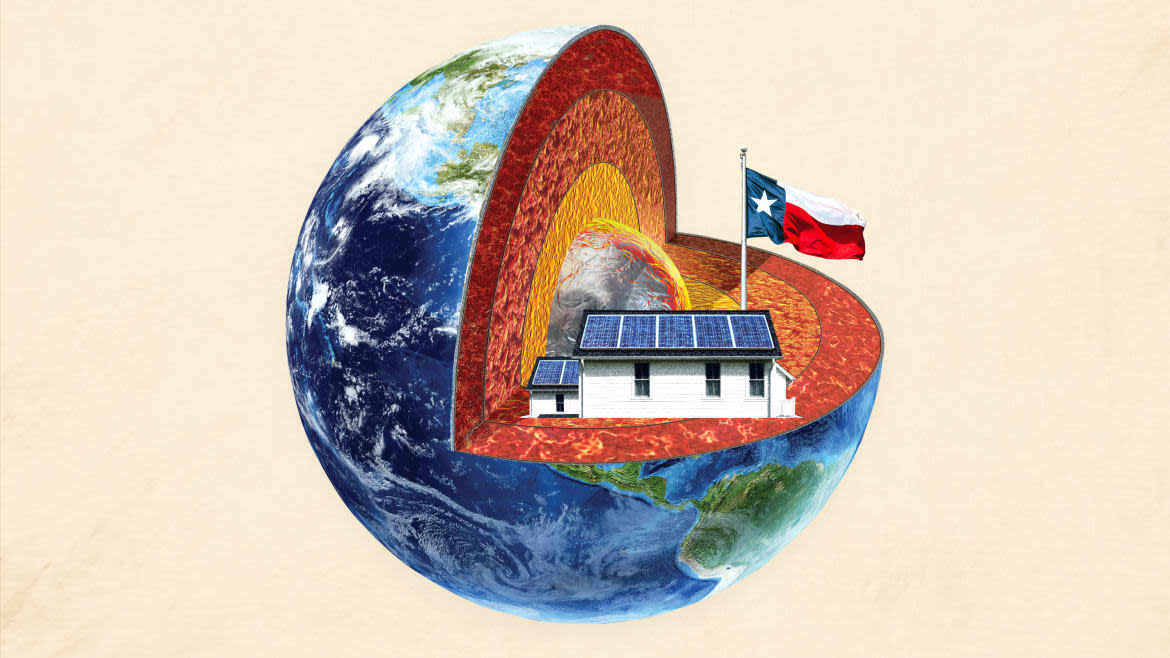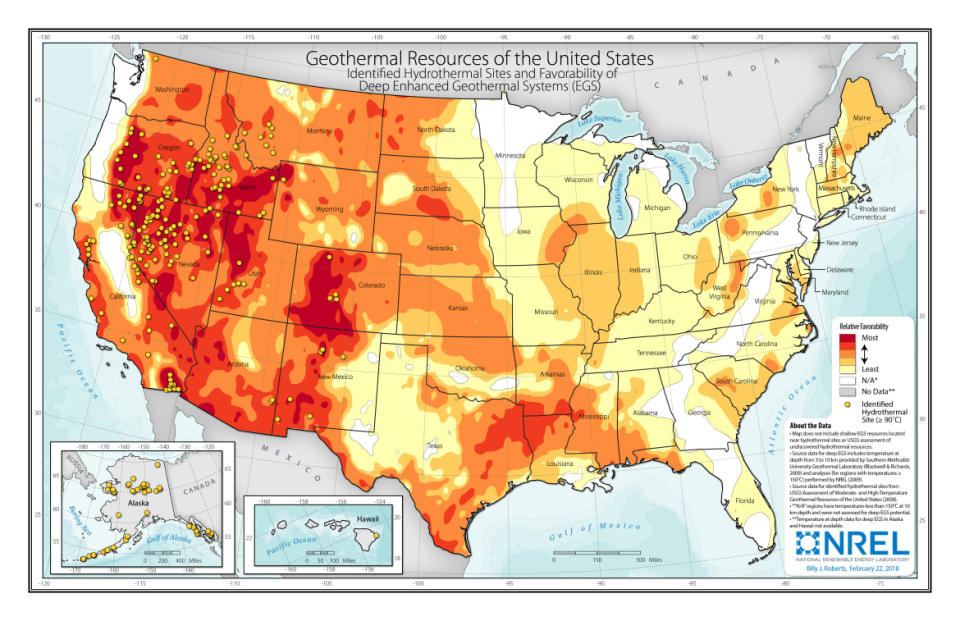How the Earth’s Crust Pumps Power Into These Texas Homes

The temperature outside varies from season to season depending on the tilt of the Earth. Underground, however, temperatures are much more consistent throughout the year. The deeper you go, the warmer it gets, until you reach the Earth’s fiery, molten core. To keep things comfortable above ground, we often rely on air conditioning and heating—and it turns out we can use the reliability of temperatures underground to cheaply control the climate of our indoor spaces.
Douglas Gilliland is the president of Taurus of Texas, which is the developer behind a planned community in Austin, Texas, called Whisper Valley. The community sits on more than 2,000 acres of lush land and will include 5,000 homes and 2,500 rental units when the project is completed (more than 350 homes are occupied at the time of reporting). Roughly 700 acres of that land is being preserved as a green space where residents can enjoy nature and recreational activities. It has organic gardens, dog parks, fitness centers, resort pools, miles of trails, and more. Its homes are also cooled by what are called geothermal heat pumps.
“We build what’s called a geogrid. A geogrid is simply a series of pipes that are injected with water, and those pipes are at varying depths in the ground at Whisper Valley,” Gilliland told The Daily Beast. “Every single lot has a pipe that goes 350 feet deep into the ground. It’s held in the ground by a special grout, and the grout allows the Earth’s energy—its heat—to transmit easily into the water.”
The Earth’s heat brings the water temperature to roughly 75 degrees. That water is pumped into the house and goes into the heat pump, which is a heating and cooling system. Considering it’s Austin, they typically look to cool things down. So the heat pump converts the water into air and can quickly bring the temperature down from 75 to whatever temperature the homeowner finds comfortable.
To Stop Climate Change, Electrify Everything—Now
“That simply doesn’t cost much money,” Gilliland said. “The net effect for the homeowner is that their utility bill gets very small. Depending on their energy behavior, it could be anywhere from nothing to maybe $50 per month.”
Beyond the geothermal system, the homes in Whisper Valley are also equipped with solar panels to meet other energy needs. The community is still hooked up to the grid, which is legally required in Texas, but it uses very little energy. Gilliland said Whisper Valley homes have a Home Energy Rating System (HERS) rating under 20, while new traditionally heated homes typically reach 50 to 60. The lower the number, the more energy efficient the home is. They’re also planning to start equipping homes with Tesla Powerwalls, a rechargeable battery station, for energy storage.
“We have a monitoring device—a sensing device—that attaches to each one of our heat pumps and monitors the energy performance of the home on a 24/7 basis,” Gilliland said. “We can tell a homeowner—with any room in the house—what their energy habits are. We’ve found people really love to know what their energy habits are. It helps us have predictability in the performance of our system.”
Gilliland said residents are really happy to be living in a place where there’s less of an impact on the environment, and the city has embraced this new way of living. His company plans to build more communities like Whisper Valley around the country.
A Climate Change-Fueled Energy Crisis Is Creating a Market of Fake Solar Panels in Zimbabwe
Jeff Tester, a professor of sustainable energy systems at Cornell University, told The Daily Beast that geothermal heat pumps are becoming more popular every year. Nearly 2 million units have been installed in the United States.
“It’s growing fast because their performance is higher and the cost is coming down,” Tester said.
The federal government and many states offer incentives to help reduce the cost of installing a geothermal heat pump system. As things stand, installing one of these systems typically costs around $30,000 after everything is said and done.
Not only can Earth’s heat be used for heating and cooling our homes, it could also power them. The United States is the world’s largest producer of geothermal energy, but it still accounts for less than 1 percent of the country’s energy production. California produces the most with the state producing roughly 70 percent of the country’s geothermal energy.
Geothermal-sourced electricity is created by drilling a hole one to two miles into the Earth and pumping up hot water found at those depths. The water turns to steam at the lower pressures found above ground and that steam turns turbines to produce electricity through a generator. The water that is pumped up into the geothermal power plant is then pumped back into the reservoir where it originated.
Tester said geothermal is often overlooked when it comes to renewable energy sources, and he thinks it should get more focus. Places in the West where the hot water is the most plentiful could produce a lot more geothermal energy.

Places in the Western United States hold the most promise for geothermal energy.
“It’s on all the time. It works all the time. It doesn’t have this interruptibility that solar does or wind does. We can complement the needs of a large-scale deployment of wind and solar,” Tester said.
California is increasing its geothermal energy production, but there’s room for a lot more growth in this sector. As Tester noted, it could help fill the gaps when things like solar and wind aren’t producing an adequate amount of energy in a certain area. “It makes an incredible amount of sense to do it in a complimentary way as part of a system approach,” Tester said.
Though the initial cost of building a geothermal power plant is high, the price of energy is comparable to other renewable energy sources once it’s operational. Plants typically cost $3,000 to $6,000 per kilowatt, which is roughly double what solar and wind cost.
Wherever you might be, there’s endless energy beneath your feet that could keep your home at a nice temperature and maybe even keep the lights on. All we have to do is tap into it, and we could save some money on our energy bills and stop pumping so much carbon into the atmosphere. So as the old adage goes: Drill, baby, drill.
Get the Daily Beast's biggest scoops and scandals delivered right to your inbox. Sign up now.
Stay informed and gain unlimited access to the Daily Beast's unmatched reporting. Subscribe now.

